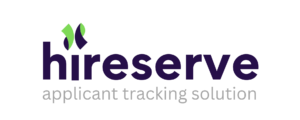It’s no secret that Higher Education institutions have been struggling to hire.
While the working and academic landscapes have evolved heavily in the last few years, leadership, HR, and recruitment have often struggled to keep up.
In the following article, we explore the core issues facing the sector below in order to consider practical and realistic solutions to such challenges.
Work-Life Balance
Many people working in Higher Education have been coping with burnout issues, and the perception of an excessive workload is cited as one of the key issues the sector faces when retaining workers.
Achieving work-life balance is not just down to the individual. The culture of organisations play an indisputably key role, as leadership that don’t respect boundaries, underpay with excessive hours, and unrealistic expectations can only be combatted so much by a mental health day.
Therefore, it’s crucial for recruitment teams to align with HR and leadership to take a realistic and critical look at how their business currently functions and put in place the policies and practices to work towards real change. Only once this has been done can recruitment managers display what they know to be a truly impressive employer brand in their job advertisements.
While many of these changes take time, some can work quicker than others. For example, upgrading your benefits package to include benefits which can relieve stress – such as covering childcare costs or providing health insurance – can be a significant first step.
Flexibility is Key
Recently, pregnant researchers and new parents outlined how they encountered obstacles with inflexible hiring processes in Higher Education.
With so many recruitment and HR teams keen to cut their cost-per-hire and time to hire, candidate experience too often gets flung on the back burner. Tight budgets can make it difficult for these teams to strike the important balance between this appeasement of both internal stakeholders and talented applicants.
This is where your recruitment tech should come in.
An example of this is interview scheduling. This process is a well-known drain on resource and time, and so any ATS should be lightening the load of this administrative task as much as possible.
Hireserve’s ‘self-select’ interview tool reduces stress for both candidates and the employer, by allowing your interview panel to upload their availability and then candidates to select their interview slots themselves. No more sifting through the calendar with the phone on speaker, no more diary mix ups.
Learn more about this feature of the Hireserve ATS here.
Genuine Diversity
Higher Education has not been exempted from the recent magnifying lens cast on the often severe lack of diversity and inclusion in the workplace. As much as hiring managers and leadership may resist admitting it, bias and prejudice still play a role in the recruitment decisions made in the hiring process.
The first advice given to many of the organisations looking to correct this is to introduce training programmes and seminars. However, the behavioural science of how to hack people’s unconscious prejudices points to something else.
Research shows that getting hiring managers to take part in activities which encourage cognitive dissonance, eg. acting in a way that does not align with their subconscious biases, can make much more of a difference than those annual seminars.
Mentoring programmes specifically for diverse talent is one way to achieve this. When sponsoring these talented individuals for training and assignments, experiments show that people have a strong tendency to “correct” the dissonance they experience by then changing their views to align with what they are doing.
These mentoring activities prompt employees to not only change their perspective long term, but also helps workplaces become more inclusive, as diverse talent can then access the opportunities they too often lack.
You may be interested to learn about Hireserve’s CV anonymisation tool.
Choose the Right Tech
With significant investment projects underway and a new campus, the University of York was planning to double in size. Offering new courses and attracting a larger numbers of students, the organisation then needed to find an “efficient, reliable, and user-friendly” recruitment software to cope with the demands of increased volume of roles, candidates, and support the changing recruitment needs of the institution.
The University of York chose Hireserve and have seen the pay off.
“Both applicants and recruitment managers are delighted with the usability and the University is providing a superb recruitment experience, supporting the need to attract the best candidates and drive the ambitious recruitment programme as the University expands. We are now looking forward to refining the recruitment process by adopting additional functionality within the product.” -Rob Hargrave, Shared Services Project Manager, University of York
Read the full case study here.


